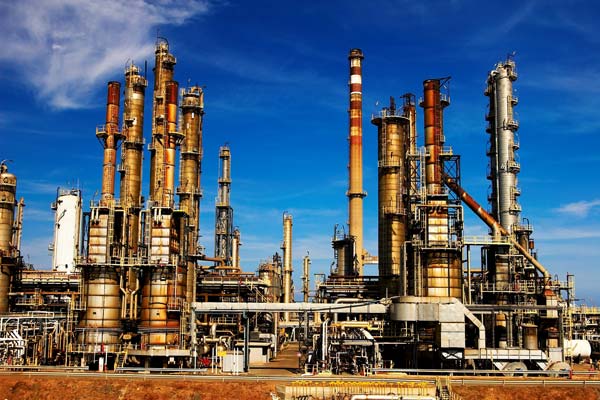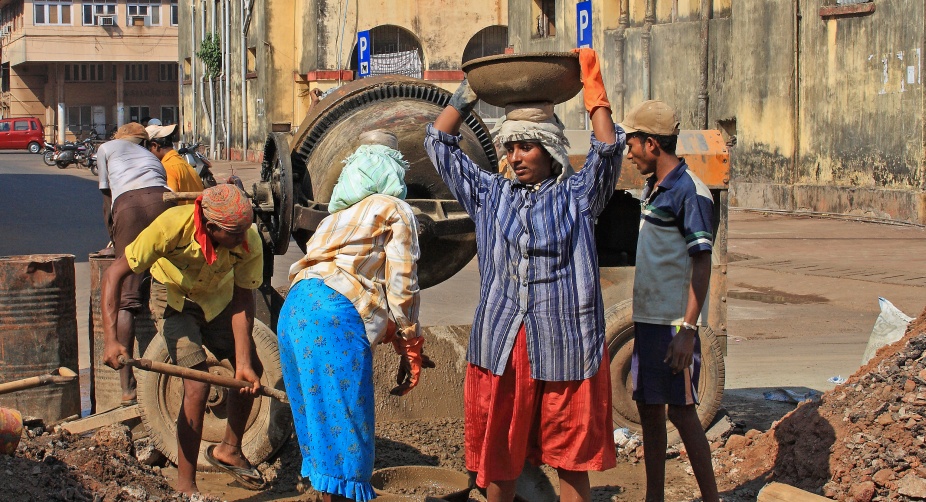On the basis of ownership, working conditions for employees and the nature of the activity done, the Indian economy can be divided into different sectors. Economic activities are those that result in goods and services being produced. Sectors are groups of economic activities that are categorized according to certain criteria. In this section, we will learn about the various sectors of the Indian Economy, planning for the Indian economy, Planning Commission, Niti Aayog, and many other important points about the Indian economy.
Various Sectors of Economy in India

The Sectors of the Indian Economy can be divided on the basis of nature of the activity, working conditions, and ownership of assets. There are three categories of classification:
Economic activities are classified according to the nature of the activity
- Primary Sector
- Secondary sector
- Tertiary sector
Classification of economic activity based on working conditions
- Organized sector
- Unorganized sector
Economic activities are classified according to who owns the assets
- Public sector (government’s control)
- Private sector (controlled by individual or group of individuals)
Primary Sector of Indian Economy
The primary industry is fully dependent on the environment for manufacturing and production. A primary sector is one in which the earth’s raw minerals are harvested. The primary sector encompasses all operations that result in the production of goods through the extraction of natural resources. Agriculture, fishing, mining, and animal husbandry are examples of primary sector activities. Agriculture is the most prominent example of the primary sector in India.

Forestry and fishing, on the other hand, are two more examples of this industry. Agriculture and allied sectors are two terms for the primary sector. Cotton, milk, fruits, wheat, fish, rubber, and other natural products are produced.
Primary sectors are activities that rely on natural resources directly. Agriculture, mining, fishing, forestry, dairy, and other industries are examples.
It’s termed the primary sector because it’s the foundation for everything else we build after that. Agriculture and the associated sector refer to the fact that agriculture, dairy, forestry, and fishing provide the majority of the natural items we consume.
The Secondary Sector
A secondary sector is one in which raw materials collected from the ground are transformed into semi-finished or finished products. The secondary sector’s operations follow the primary sector’s activities, in which natural products are transformed into other commodities. The secondary sector is when the primary activity is manufacturing.
The secondary sector encompasses all industrial production that produces physical commodities. As a result, the industrial sector is often known as the secondary sector. Cotton, for example, is woven into the cotton fabric, and sugar cane is processed to make sugar. The secondary sector encompasses operations in which natural goods are transformed into new forms using methods associated with industrial activity. Because products are not created by nature, they must be manufactured, which necessitates the use of some manufacturing method.

It encompasses all operations that culminate in the production of natural goods into different forms. It produces manufactured commodities such as cotton, sugar, and bricks, among other things. It is also known as the industrial sector since it has become associated with various types of industries. Natural components are employed in the secondary sector of the national economy to manufacturing products and services that are then consumed. Manufacturing and construction are examples of secondary sector activities.
It encompasses actions in which natural goods are transformed into different forms through manufacturing processes that are typically associated with industrial activity. It’s the following step after the primary, where the product isn’t created naturally and must be manufactured. Manufacturing is required in some form, whether at a factory, a workshop, or at home. For example, we spin yarn and weave cloth from cotton fiber from a plant; we create sugar from sugarcane as raw material, and we make bricks from the earth. This sector is often known as the industrial sector because it is involved with various types of industries.
Tertiary Sector
Activities in the tertiary sector aid in the growth of the primary and secondary sectors. These actions do not generate something in and of themselves, but they help or support the manufacturing process. Goods manufactured in the primary or secondary sectors, for example, would need to be carried by trucks or trains before being sold in wholesale and retail outlets, often known as the service sector. A tertiary sector transports and distributes merchandise to retailers and wholesalers.

It adds value to a product in the same way that the secondary sector does. The service sector is another name for this industry. The tertiary sector encompasses all activities that contribute to the growth of the primary and secondary sectors by assisting in the production process. The Tertiary Sector does not create commodities, but it does provide services like transportation, communication, and basting, among other things.
Banking, insurance, and finance are examples of tertiary sector activity. Certain new information technology-based services, such as cyber cafes, ATM booths, contact centers, and software businesses, are included in the tertiary sector.
Organized and Unorganized Sectors

The three economic sectors (primary, secondary, and tertiary) are further divided into Organized and Unorganized categories. The organized sector is one in which the job terms are set and consistent, and employees are guaranteed work. The organized sector is also defined as a sector that is registered with the government. People get guaranteed labor in this industry, and the job terms are set and predictable. A variety of laws apply to the organized sector, which includes businesses, schools, and hospitals.
An unorganized sector is one in which work conditions are not set and consistent, and businesses are not registered with the government. The unorganized sector employs the majority of rural workers and a significant portion of urban workers. It encompasses activities carried out by small and family businesses that rely partially or entirely on family labor.

A home-based worker, a self-employed worker, or a wage worker in the unorganized sector is considered an unorganized worker, as is a worker in the organized sector who is not covered by any of the welfare schemes listed in Schedule II of the Unorganized Workers Social Security Act, 2008. Protecting and assisting employees in the unorganized sector is critical for both economic and social growth.
Public and private sectors of the Indian economy
On the basis of who owns the assets (business) and who is accountable for delivering the service, the economic sectors can be further divided into the Public and Private sectors. The public sector is the component of the economy that is responsible for providing various government services. The military, police, infrastructure (public roads, bridges, tunnels, water supply, sewers, electrical grids, telecommunications, and so on), public transit, public education, and health care, as well as those working for the government itself, such as elected officials, make up the public sector in most countries.
The public sector may provide services that a non-payer cannot be denied (such as street lighting), services that benefit society as a whole rather than just the person who uses them. The public sector does not exist solely to make money. Governments raise funds through taxes and other means to cover the costs of the services they provide.
The private sector, sometimes known as the citizen sector, is the part of the economy that is run by private persons or groups, usually for profit, and is not regulated by the government (areas of the economy controlled by the state being referred to as the public sector). The private sector’s activities are guided by the desire to make money. We must pay money to these persons and companies in order to obtain such services.
Which sector makes the most contribution to India’s GDP?
India produces 7.68 percent of the world’s total agricultural output. The industry has a GDP of $495.62 billion and is ranked 12th in the world. India is ranked 11th in the world in the services industry, with a GDP of $1185.79 billion. The agricultural sector’s contribution to the Indian economy is significantly larger than the global average (6.1 percent ).
Industry and Trade
Poor countries can only advance if they have a strong industrial sector, according to economists. The sector provides more steady work than agriculture, as well as promoting modernization and overall development. As a result, industrial growth is given a high priority in the five-year plans.
The range of industries available at the time of independence was quite limited, mostly consisting of cotton textiles and jute. There were two well-managed iron and steel corporations – one in Jamshedpur and the other in Kolkata – but if the economy was to thrive, we needed to diversify our industrial base with a range of industries.
Public and private sectors in Indian industrial development
The main question for policymakers was what role the government and private sector should play in industrial development. Indian industrialists did not have the funds to invest in industrial initiatives essential for the development of our economy at the time of independence, nor was the market large enough to entice industrialists to undertake huge projects even if they did have the capital. For these reasons, the government has had to play a significant role in fostering the industrial sector.
Furthermore, as the second five-year plan put it, the determination to develop the Indian economy along socialist lines resulted in a policy of the state controlling the commanding heights of the economy. This meant that the government would have complete control over the economy’s most important industries. The private sector’s policies would have to be complementary to the public sector’s, with the public sector taking the lead.
Animal Husbandry
Cattle, goats, and poultry are among the most often held species in India’s mixed crop-livestock farming system. The family’s income, food security, transportation, fuel, and nutrition are all improved by livestock production, which does not interfere with other food-producing activities. Over 70 million small and marginal farmers, as well as landless laborers, have alternative living possibilities thanks to the livestock business. Women are also employed in the livestock industry in large numbers.
Poultry takes the lead with 55 percent, followed by other animals. Other creatures on the lowest rung include camels, asses, horses, ponies, and mules. In 2007, India has over 304 million animals, including 105 million buffaloes. Over the previous three decades, the Indian dairy industry has produced some outstanding results. Between 1960 and 2009, the country’s milk production surged by more than fivefold.
This can largely be ascribed to the successful execution of Operation Flood. It is a system in which all farmers pool their milk production according to different grade gradings, which is then processed and sold to urban centers through cooperatives. Farmers are guaranteed a reasonable price and income from milk supply to urban markets under this scheme. As previously said, Gujarat is regarded as a success story in the efficient implementation of milk cooperatives, and many other states have followed suit. Meat, eggs, wool, and other byproducts are also gaining traction as significant diversification industries.
Horticulture
India has adopted the growth of numerous horticulture crops such as fruits, vegetables, tuber crops, flowers, medicinal and aromatic plants, spices, and plantation crops due to its varied climate and soil conditions. These crops are important for providing food and nutrition, as well as addressing employment issues. The period 1991-2003 is also known as an attempt to herald a golden revolution since planned investments in horticulture became very fruitful during this time, and the industry emerged as a viable source of income.
India is the world’s leading producer of mangoes, bananas, coconuts, cashew nuts, and a variety of spices, as well as the world’s second-largest producer of fruits and vegetables. Horticulture has improved the economic situation of many farmers, and it has become a source of income for many people from lower socioeconomic classes. Flower picking, nursery care, hybrid seed production, tissue culture, fruit and flower propagation, and food processing are all very profitable jobs for rural women.
Our cattle population is amazing in terms of numbers, but its productivity is low when compared to other countries. To increase productivity, better technologies and the promotion of desirable animal breeds are required. Improved veterinary care and financial facilities for small and marginal farmers and landless laborers would improve cattle production’s long-term viability. Fisheries production has already increased significantly.
Overfishing and pollution, on the other hand, must be monitored and controlled. Welfare programs for fishermen must be redirected in a way that ensures long-term gains and the continuation of livelihoods. Horticulture has evolved as a viable, long-term livelihood option that has to be promoted aggressively. Investment in infrastructures, such as energy, cold storage systems, marketing links, small-scale processing units, and technology enhancement and dissemination, is required to help it play a bigger role.
Other Alternatives to Earning a Living
Many sectors of the Indian economy have been transformed by IT. There is widespread agreement that information technology can help achieve sustainable development and food security in the twenty-first century. Governments can use proper information and software tools to predict regions of food insecurity and vulnerability, allowing them to take action to avert or mitigate the impact of a disaster.
It also benefits agriculture by disseminating knowledge on emerging technology and their uses, prices, weather and soil conditions for producing various crops, and so on. Though Technology is not a catalyst for change in and of itself, it can be used to unlock society’s creative potential and knowledge. It also has the ability to generate employment in rural regions, as evidenced by experiments with IT and its application to rural development in many parts of India.


